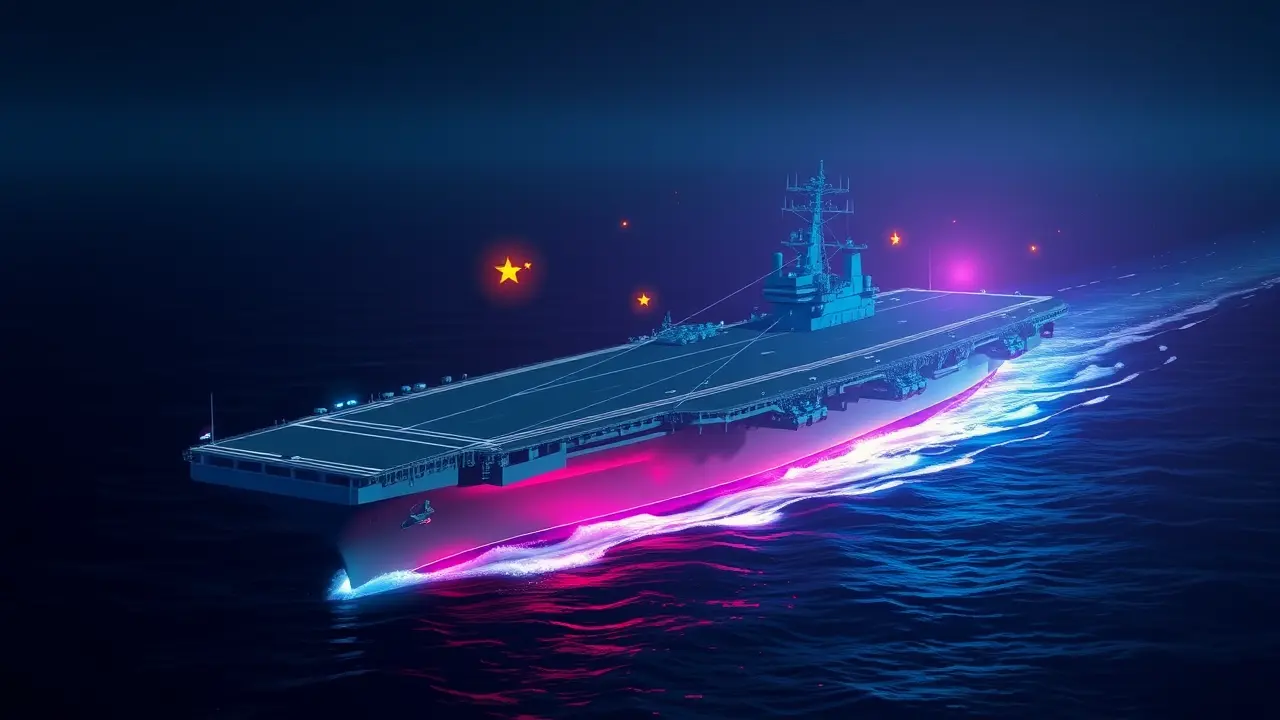
Politicsconflict & defenseMilitary Operations
China's New Aircraft Carrier Could Shift Western Pacific Power Balance.
OL
Oliver Scott
6 hours ago7 min read1 comments
The commissioning of China's third aircraft carrier, the Fujian, in a grand ceremony overseen by President Xi Jinping last Wednesday in Sanya, Hainan province, represents not merely a new naval asset but a fundamental recalibration of strategic risk in the Indo-Pacific theater. This isn't just another ship; the Fujian is China's first domestically built carrier to feature an electromagnetic catapult system, a technology previously mastered only by the United States' most advanced Gerald R.Ford-class carriers. This electromagnetic aircraft launch system (EMALS) is the game-changer, enabling the Fujian to launch a wider variety of aircraft, including heavier fighters and early-warning planes, at a much faster sortie rate than the ski-jump ramps on its predecessors, the Liaoning and Shandong.The immediate tactical implication is the projection of more potent and sustained air power further from China's shores, directly challenging the U. S.Navy's long-held dominance in the western Pacific and complicating the defense calculus for American allies from Japan to the Philippines. The South China Sea, already a contested maritime domain where Beijing has constructed and militarized artificial islands, could effectively become a Chinese lake, patrolled by a carrier group capable of establishing local air superiority.Looking further afield, the Indian Ocean, a critical artery for global trade and energy supplies where China has established a strategic foothold in Djibouti, now faces the future prospect of routine Chinese carrier deployments, directly challenging India's regional naval primacy and extending Beijing's strategic reach into the Middle East. This development must be analyzed through the lens of scenario planning: a low-probability, high-impact event like a blockade or conflict over Taiwan becomes exponentially more complex for the U.S. and its partners to manage with a third, technologically advanced Chinese carrier in the mix.The geopolitical risk extends beyond pure military hardware; it signals China's unwavering commitment to a blue-water navy capable of sustained power projection, a direct challenge to the post-World War II U. S.-led order in Asia. Western analysts are now forced to model scenarios where, for the first time since the Cold War, the U.S. Seventh Fleet could face a peer competitor with near-equivalent carrier capabilities in its own backyard.The ripple effects will inevitably trigger a regional arms race, with nations like Japan, Australia, and India likely accelerating their own naval and anti-access/area-denial (A2/AD) investments. While the Fujian still requires years of intensive sea trials and air wing integration before achieving full operational capability, its launch is a definitive statement. It marks the closure of a critical technological gap and inaugurates a new, more dangerous chapter of great-power competition at sea, where the balance of power is no longer a theoretical concept but a tangible, shifting reality measured in catapult cycles and carrier strike group deployments.
#China
#aircraft carrier
#Fujian
#naval power
#western Pacific
#featured
Stay Informed. Act Smarter.
Get weekly highlights, major headlines, and expert insights — then put your knowledge to work in our live prediction markets.
© 2025 Outpoll Service LTD. All rights reserved.